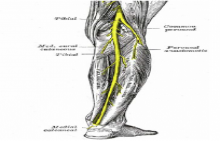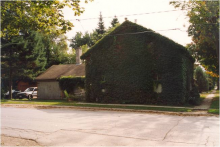If you would like to see more information on this case study, click here!
You can request this case study and a WCDE staff member will get back to you.

 In August 1999, Steve Lambert, a Professor in the Department of Mechanical and Mechatronics Engineering at the University of Waterloo, purchased a stone house, Figure 1, in Elora, Ontario, Canada. The house was originally constructed in about 1860, and the structure had not been significantly updated. The house was heated using a forced-air natural gas furnace but there was no significant insulation in the walls. As a consequence, the house is drafty, cold and uncomfortable in the winters. The stone construction results in significant ‘thermal mass’, so that the house responds slowly to outside temperature changes, and remains relatively comfortable and cool, especially on the main floor, in the summers. The house was purchased with the intention of significantly updating the interior, especially the insulation and windows, to significantly improve both comfort levels and energy efficiency. Professor Lambert is in the process of upgrading this house, primarily the insulation, and implementing radiant in-floor heating based on hot water. It is necessary to choose a heating source for the hot water used to heat the house.
In August 1999, Steve Lambert, a Professor in the Department of Mechanical and Mechatronics Engineering at the University of Waterloo, purchased a stone house, Figure 1, in Elora, Ontario, Canada. The house was originally constructed in about 1860, and the structure had not been significantly updated. The house was heated using a forced-air natural gas furnace but there was no significant insulation in the walls. As a consequence, the house is drafty, cold and uncomfortable in the winters. The stone construction results in significant ‘thermal mass’, so that the house responds slowly to outside temperature changes, and remains relatively comfortable and cool, especially on the main floor, in the summers. The house was purchased with the intention of significantly updating the interior, especially the insulation and windows, to significantly improve both comfort levels and energy efficiency. Professor Lambert is in the process of upgrading this house, primarily the insulation, and implementing radiant in-floor heating based on hot water. It is necessary to choose a heating source for the hot water used to heat the house.
This case study is intended to illustrate thermal modeling in design, especially simple one-dimensional steady-state heat transfer models. The importance of verification of models is stressed.
If you would like to see more information on this case study, click here!
You can request this case study and a WCDE staff member will get back to you.
Contact Waterloo Cases in Design Engineering
Steve Lambert
Tel: (519) 888-4728
Email: steve@uwaterloo.ca
The University of Waterloo acknowledges that much of our work takes place on the traditional territory of the Neutral, Anishinaabeg, and Haudenosaunee peoples. Our main campus is situated on the Haldimand Tract, the land granted to the Six Nations that includes six miles on each side of the Grand River. Our active work toward reconciliation takes place across our campuses through research, learning, teaching, and community building, and is co-ordinated within the Office of Indigenous Relations.